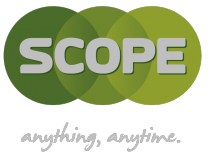Accusoft Blog Explains: What Is Document Comparison?
TAMPA, Fla., Oct. 26, 2017 /PRNewswire/ -- Accusoft, the world leader in document and imaging solutions for software developers, recently published a blog post highlighting the use cases and organizational impact of document comparison features in software.
Document comparison is the process of cross checking new versions of a document against previous copies for various changes. These changes could include formatting modifications such as font or spacing changes, grammatical changes, or the addition or omission of words, sentences, clauses or paragraphs. The process is also referred to as 'redlining'.
To view the full blog post, go to https://www.accusoft.com/blog/what-is-document-comparison/
Why would someone want to see such specific differences between documents? It depends on your line of business.
Say you're working on finalizing a contract with a new client. You type up the contract and send it to the client or their lawyer for review. When the document is returned, any alterations that might have been made to the contract have already been added or subtracted from the original text. How can you tell if any clauses have been included? How about any stipulations that may be missing? One change can affect the entire meaning of the contract, and missing it could mean the loss of the deal, your company's reputation, or even your job.
Imagine you are comparing these two documents the old fashioned way; paper copy to paper copy. You may have one of your co-workers read the returned copy of the contract aloud while you take a pen to the original and cross out, or scribble in, any differences. This contract may be 50 or 100 pages in length. How long might it take before you or your co worker gets burnt out and makes a mistake? How much could missing a single word or sentence cost you?
Why use a document comparison tool?
Hopefully, that scenario no longer exists with today's readily available technology, but it is useful in pointing out why document comparison tools are a necessity for businesses. At the highest level, it is a waste of resources to print out copies of the original and revised documents and lose hours of manpower to go through page after page. Hundreds of pages of paper, cartridges of ink, and the opportunity cost of labor add up. Especially so if your company is revising documents on a regular basis.
Consider the accuracy of this process using human eyes. In the event that your company is using a redlining process, meaning alterations to documents are returned marked with underlines and strikethroughs, missed changes can still occur. If the person marking the tracked document were to have accidentally deleted a paragraph rather than marked it with a strikethrough, there is a good chance it would go unnoticed in a manual review. With a comparison tool, the omitted text would be detected as a difference between the previous version and the current. Even your best employee will likely miss minute details such as changed commas or font changes whereas a computerized process will miss nothing. In addition to accuracy, using a comparison tool allows the use of various helpful features and saves time, thus increasing productivity.
Who can benefit from a document comparison tool?
Generally speaking, any business can find some benefit in adopting a document comparison tool:
-- Professors could use comparison features to make comments on a student's
work or see what changes were made between a rough versus final draft of
an assignment.
-- Writers could easily see what changes were made to a piece by their
editors.
-- Real estate agents can track what amendments a buyer has made to an
offer.
-- Lawyers can ensure all important clauses remain intact in a lengthy,
legally binding contract.
Revising documents for business deals, lease agreements, team reports, finance reasons... The possibilities for use are nearly endless.
What should you look for in a document comparison tool?
-- Readability
-- The most important feature is readability. Being able to see what is
different is useless if you cannot understand where or what the
differences are or what the new document looks like.
-- Type of change made
-- It should be easy to tell if the change made was a change in content
or format.
-- Commenting
-- The ability to let another editor know why you made a particular
change is another convenient communicative tool.
-- Archiving
-- Staying on top of multiple versions of the same document can become
tricky. The ability to archive versions in an easy to decipher
manner is invaluable.
About Accusoft:
Accusoft offers a robust portfolio of document and imaging tools created for developers. Our APIs and software development toolkits are built using patented technology, providing high-performance document viewing, advanced search, image compression, conversion, barcode recognition, OCR, and other image processing tools for use in application and web development. Visit www.accusoft.com for more information.
Contact:
Adam Thompson
813.875.7575 x 4005
athompson@accusoft.com
View original content with multimedia:http://www.prnewswire.com/news-releases/accusoft-blog-explains-what-is-document-comparison-300544126.html
SOURCE Accusoft




